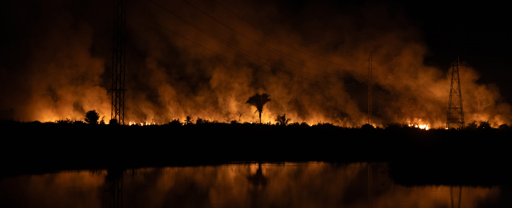Burning fossil fuels and forests releases the well-known greenhouse gases that drive anthropogenic climate change. That burning also produces soot, a fine black particle that harms health and accelerates warming. A new photo series highlights the often overlooked consequence of burning. Award-winning photojournalist Victor Moriyama, in partnership with the Clean Air Fund, traveled across Brazil, from the Amazon Rainforest in the north to rural communities in the southeast, to photograph soot and its human impacts during 2025, following some of the nation’s driest years on record. Soot, also called black carbon, can stay suspended in the air for weeks or months before settling. When it lands, the particles darken the ground, or ice, increasing the absorption of heat from the sun, intensifying warming. For people living near burning landscapes, soot becomes unavoidable. It’s inhaled into lungs, causing illness and death. The effects are devastating: globally, soot contributes to at least 8.1 million premature deaths every year, roughly 700,000 of them children under 5. Despite its demonstrated damage to human health and contributions to climate change, soot has been largely overlooked. Just 1% of international development funding between 2019 and 2023 went toward clean air projects, including work targeting soot, according to the Clean Air Fund’s latest report. Mongabay spoke to Moriyama about his months-long experience photographing fire, soot and smoke. Below are some of his photos and thoughts. “I’ve spent a lot of time in Amazon fires, right in the middle of the flames,” Moriyama told Mongabay by phone.…This article was originally published on Mongabay
From Conservation news via this RSS feed


